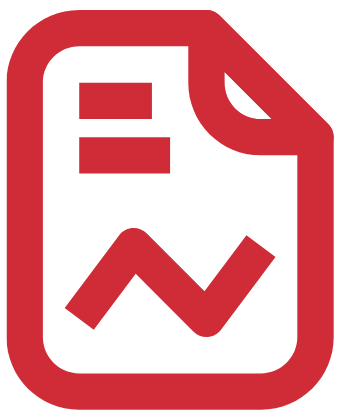In the modern workplace, recognition is a core performance strategy, not just an initiative. As organizations navigate hybrid work, global teams, and increasing employee expectations, structured employee rewards and recognition programs have become one of the most powerful tools for driving engagement, retention, and belonging.
Recognition turns company values into lived behaviors. Rewards turn those behaviors into momentum. Together, they create a culture where people feel seen, valued, and inspired to contribute their best work.
Modern organizations are expanding their rewards and recognition programs to include wellbeing, purpose-based appreciation, and flexible experiences, not only traditional employee reward programs tied to annual cycles.
Recent global research underscores the stakes:
- Low engagement costs the global economy approximately $9 trillion annually in lost productivity
- Employees who do not feel recognized are twice as likely to leave within a year
- Well-recognized employees are 45% less likely to have turned over after two years
Engagement is a business essential. And recognition remains one of the most effective and efficient organizational drivers of performance, connection, and belonging at scale.
Here’s what we’ll cover:
- What are employee rewards and recognition programs?
- Why recognition matters more than ever
- Designing an effective recognition framework
- 7 Top employee recognition ideas
- Recognition in practice: turning values into action
- Global recognition and inclusion
- Integrating recognition with wellbeing and LSAs
- How to launch an employee recognition program
- Bringing recognition into the future of work
- FAQs about recognition programs
What are employee rewards and recognition programs?
Employee rewards and recognition programs are structured systems that acknowledge individuals and teams for their contributions, achievements, and alignment with organizational values. These systems, often implemented through modern HR recognition programs, help ensure appreciation is consistent, fair, and aligned with organizational values.
Recognition may include:
- Public appreciation or peer acknowledgment
- Manager or leadership nominations
- Moments of “everyday gratitude” tied to values or culture
Rewards may include:
- Points-based awards
- Experiences, development, or wellbeing-aligned options
- Meaningful symbolic gestures
These employee rewards and recognition strategies reinforce shared values and drive behaviors aligned with organizational goals. This approach goes beyond incentives: combining employee incentive programs, values-based recognition, and everyday appreciation.
The intent isn’t transactional, it’s cultural. Recognition programs exist to reinforce the behaviors and mindsets that drive performance and belonging. And make organizational values visible in action.
Why recognition matters more than ever
Employee engagement remains one of the strongest predictors of organizational performance—influencing productivity, innovation, customer experience, and retention. Yet global research shows it is also one of the hardest outcomes to sustain in a rapidly changing workplace.
According to Gallup’s State of the Global Workplace report:
- Low engagement currently costs approximately $9T globally in lost productivity each year
- Only 23% of employees globally report being engaged at work
- Recognition is a top predictor of loyalty and performance
- Employees who do not feel recognized are more than twice as likely to say they plan to leave within the next year
- Employees who feel meaningfully recognized are 5x more likely to be engaged
A well-designed company rewards program elevates recognition from a simple thank-you into a meaningful experience that deepens connection, strengthens belonging, and reinforces the moments that matter to employees.
When organizations combine recognition with employee engagement programs and leadership alignment, they see measurable lifts in connection, motivation, and performance.
[Graphic linking to 2026 Benchmark: Espresa program utilization benchmarks consistently show recognition as one of the highest-engagement components across employee experience programs, reinforcing its strategic impact on connection, culture, and performance.]
When appreciation is timely, authentic, and connected to values, employees report:
- Higher productivity and innovation
- Greater sense of belonging and psychological safety
- Stronger connection to mission, purpose, and leadership
- Increased resilience and discretionary effort
- Improved cross-team collaboration and trust
- Higher retention in cultures of consistent appreciation
Modern employee reward programs extend beyond traditional or legacy service awards. They make it possible to consistently celebrate the everyday behaviors and achievements that shape culture: from innovation and collaboration to inclusion and leadership.
Recognition is not simply acknowledgment. It’s an engine for belonging, performance, and sustained engagement. For many organizations, rewards management software provides the structure needed to deliver timely, meaningful recognition–especially across hybrid and global teams.
Designing an effective recognition framework
Designing comprehensive employee rewards and recognition programs requires balancing structure, flexibility, and cultural alignment. The goal is to build a program that is consistent enough to be fair, yet flexible enough to feel personal, authentic, and human.
An effective reward and recognition framework balances structure and flexibility so appreciation feels meaningful while still reinforcing organizational goals. This ensures that recognition is not just a series of isolated moments, but an intentional system that supports performance, belonging, and shared success.
When designing a recognition strategy, consider the following core elements:
- Purpose: Define what the program is meant to encourage: collaboration, innovation, customer satisfaction, or alignment with values
- Equity: Ensure employee recognition opportunities are accessible and meaningful across all roles, regions, and work environments
- Frequency: Recognition should be continuous and timely, not reserved for annual reviews
- Reward Design: Offer diverse, meaningful options that resonate across a multigenerational workforce and enable personalized employee rewards tailored to individual preferences, motivations, and life stages
- Measurement: Track engagement, participation rates, and impact on retention and culture
Mature employee rewards and recognition programs measure both quantitative measures (frequency, participation, tenure impact) and qualitative indicators like employee sentiment, manager adoption, and cultural storytelling. Organizations that consistently measure and invest in recognition see meaningful improvements in engagement and performance.
Strong programs often combine formal and informal recognition, with leaders setting the tone and peers amplifying it through everyday appreciation. Programs should include flexible options from points and spot bonuses to experience-based rewards and thoughtful recognition award ideas that resonate across diverse teams.
7 Top employee recognition ideas
Modern employee recognition programs blend everyday appreciation with meaningful reward moments. Below are a few quick, high-impact team recognition ideas and approaches used across leading organizations:
1. Peer-to-peer appreciation
Empower teams to recognize everyday wins and collaboration
2. Values-based spot recognition
Highlight behaviors that reflect company principles (innovation, inclusion, resilience, customer focus)
3. Personalized and creative employee rewards
Offer choices that reflect individual preferences, interests, and life stages (wellbeing, learning, experiences, flexible options)
4. Employee milestone rewards
Celebrate life moments and career growth (promotions, certifications, anniversaries, or family life events, following the example of clients like Airbnb, who celebrate these milestones in meaningful ways)
5. Customer service recognition
Acknowledge contributions that strengthen client experience and service excellence, including customer service reward programs
6. Team-based achievement moments
Recognize shared success and cross-functional collaboration
7. Leadership-driven appreciation
Equip managers with prompts and support to deliver meaningful, timely recognition
These ideas help employee rewards and recognition programs feel authentic, inclusive, and aligned—reinforcing both performance and belonging.
Recognition in the review cycle
Recognition is most powerful when it’s connected to growth and performance, not treated as separate from the review cycle. Leading organizations integrate recognition touchpoints into performance conversations, enabling managers to highlight progress, reinforce values, and acknowledge collaborative impact throughout the year. People-first leaders like Avalara model this approach by elevating both impact and collaboration in their performance culture.
This creates a balanced view of contribution that includes results, behaviors, and teamwork rather than focusing only on output or metrics.
Recognition in practice: turning values into action
Recognition becomes powerful when it reinforces the values, behaviors, and leadership qualities that define an organization at its best. This ensures appreciation is not only a feel-good gesture, but also a cultural sign that shapes how success is understood and rewarded.
Research published in Harvard Business Review highlights that recognition tied to meaningful achievement and personal identity drives stronger motivation and long-term commitment. Gallup similarly finds that recognition that is specific, timely, and authentic has a compounding effect on motivation and performance over time. Connecting appreciation to values helps employees see how their work contributes to shared purpose and progress.
By celebrating behaviors that reflect organizational principles—including resilience, creativity, inclusion, or exceptional service recognized through customer service rewards—organizations strengthen clarity around what great performance looks like and how culture shows up in action.
Global recognition and inclusion
Inclusive recognition considers cultural norms, communication styles, generational preferences, and global work realities. It ensures employees are celebrated in ways that reflect their context and identity.
Strategies include:
- Offering culturally flexible reward options, including non-monetary employee rewards
- Ensuring recognition moments are accessible across time zones and work environments
- Avoiding language or practices that exclude certain groups
Encouraging peer-driven recognition to ensure appreciation is shared widely - Inclusive employee rewards and recognition platforms ensure global employees feel equally valued and supported within corporate recognition programs
Integrating recognition with wellbeing and LSAs
Employee experience has evolved beyond traditional benefits. Progressive organizations recognize that belonging, wellbeing, and personal growth all play a critical role in performance and retention. As Deloitte’s 2025 Global Human Capital Trends Report notes, companies shifting from transactional incentives to human-centered rewards approaches are better positioned to activate motivation and sustained engagement. As a result, recognition strategies are expanding beyond achievement-based rewards to include support for wellbeing, life moments, and personal development.
Leading workplaces bring together employee milestone rewards, rewards and recognition programs, wellbeing investments, and lifestyle benefits to create holistic employee support. This approach allows individuals to feel seen not only for their work, but for the moments that shape their lives, from career growth to health, family, and community contributions. This shift moves recognition from “work output” to whole-person support, signaling that people are valued for who they are and how they show up, not just what they deliver.
[Graphic: Employees who strongly believe their organization cares about their wellbeing are 3x more likely to be engaged and 71% less likely to experience burnout (Source: Gallup)]
Integrated rewards and recognition programs that connect with wellbeing initiatives and Lifestyle Spending Accounts (LSAs) enable employees to choose options that best support their personal, professional, and wellness goals. In doing so, they reinforce a simple message: employees are valued not only for what they accomplish, but for who they are.
How to launch an employee recognition program
Effective launches focus on clarity, storytelling, and human connection. Many organizations begin with internal rewards programs to test engagement, gather feedback, and refine recognition practices before scaling globally.
Key steps include:
- Define purpose and success criteria
- Introduce the program with clear and inspiring messaging
- Lead by example: leadership participation is essential
- Train managers to deliver meaningful recognition
- Encourage peer-to-peer appreciation to widen impact
- Collect feedback and refine over time
Recognition should feel natural and shared, not programmatic or top-down.
Bringing recognition into the future of work
As organizations continue to evolve, recognition remains one of the most human and high-impact tools available to leaders. It converts values into action, strengthens connection in hybrid and global environments, and supports the psychological and cultural foundations of high-performing teams.
The most effective programs are not built around moments. They’re built around mindsets and systems. They empower employees to see one another, celebrate meaningful contributions, and recognize what matters most in service of shared goals.
In workplaces where people feel seen and supported, performance and belonging move hand in hand. Recognition is how culture becomes lived, every day, by everyone. It keeps people inspired, grounded, and moving forward together.
To continue exploring how recognition, wellbeing, and flexible benefits can work together to support your people, reach out to Espresa to discuss your total rewards strategy and emerging employee-experience trends.
FAQs about recognition programs
- What is the purpose of an employee rewards and recognition program?
A recognition program helps organizations reinforce values, motivate performance, and build belonging. Rewards provide meaningful, personalized ways to celebrate contributions and milestones. Together, they strengthen engagement, connection, and culture. - How do employee recognition programs improve engagement and retention?
Employees who feel consistently recognized are significantly more likely to be engaged, productive, and committed. Recognition directly predicts loyalty. Employees who don’t feel appreciated are twice as likely to leave. - What are examples of employee rewards?
Common rewards include points, gift cards, experiential rewards, learning and development opportunities, wellbeing resources, milestone awards, and non-monetary options such as public appreciation or leadership recognition. - What’s the difference between rewards and recognition?
Recognition is the acknowledgment of an effort, behavior, or achievement. Rewards are the tangible experiential items, or monetary values, given to reinforce that recognition. One is emotional; the other is material. Both matter. - How do you measure the success of a recognition program?
Organizations track engagement, participation rates, retention impact, employee sentiment, manager adoption, and cultural storytelling. Modern platforms also provide dashboards and VOI metrics to quantify impact. - How can recognition tie into other benefits like wellbeing, LSAs, and total rewards?
Recognition is most effective when integrated with wellbeing programs, LSAs, and lifestyle benefits. Together, they support the whole employee, reflecting not just what they accomplish but who they are and how they show up. - How can technology support employee recognition?
Employee recognition platforms streamline nominations, approvals, rewards delivery, analytics, global consistency, and integration with HR systems. Unified platforms connect recognition with LSAs, wellbeing, and personal benefits to create a seamless employee experience. - What is employee recognition software?
Employee recognition software is a digital platform that helps organizations automate, manage, and scale recognition across teams. It supports peer-to-peer appreciation, manager-led recognition, nominations, rewards, reporting, and alignment to values—making recognition consistent, timely, and impactful. - What is employee engagement software?
Employee engagement software provides tools to measure, improve, and sustain engagement across the workforce. It often includes recognition, wellbeing, surveys, feedback, communication tools, and analytics to help organizations understand what employees need to thrive. - What is an employee engagement platform?
An employee engagement platform brings multiple engagement drivers into one unified experience—including recognition, wellbeing programs, LSAs, rewards, surveys, and community-building features. It helps HR create a cohesive, connected employee experience that supports belonging, motivation, and performance. - What are employee engagement programs?
Employee engagement programs are structured initiatives designed to improve motivation, satisfaction, and performance. These can include recognition programs, wellbeing initiatives, learning opportunities, manager enablement, ESG programming, and team-based activities that strengthen connection and alignment. - What are employee incentive programs?
Employee incentive programs reward employees for achieving specific goals, milestones, or performance outcomes. Incentives may include points, bonuses, experiences, lifestyle benefits, or other personalized rewards designed to encourage desired behaviors and reinforce high performance. - What is a company rewards program?
A company rewards program provides structured ways to acknowledge and reward employee contributions through points, gifts, experiences, wellbeing benefits, or LSAs. It helps reinforce culture, motivate performance, and ensure rewards are delivered fairly and consistently. - What is a reward and recognition framework?
A reward and recognition framework outlines the strategy, structure, tools, and practices used to appreciate and reward employees. It ensures recognition is aligned with values, delivered consistently, and connected to meaningful outcomes like engagement, retention, and belonging. - What are some effective team recognition ideas?
Effective team recognition ideas include celebrating collective wins, spotlighting cross-functional collaboration, hosting appreciation rituals, recognizing cultural contributions, and sharing team success stories. These practices strengthen unity and reinforce shared purpose. - What are some effective recognition award ideas?
Great recognition award ideas include peer-nominated awards, values-based awards, customer impact awards, innovation awards, wellbeing champions, milestone awards, and personalized rewards that reflect what each employee values most.
Recognition moves from acknowledgment to alignment. It reinforces who we are, how we work, and what we aspire to build together.
Frequently Asked Questions
What is the purpose of an employee rewards and recognition program?
A recognition program helps organizations reinforce values, motivate performance, and build belonging. Rewards provide meaningful, personalized ways to celebrate contributions and milestones. Together, they strengthen engagement, connection, and culture.




















